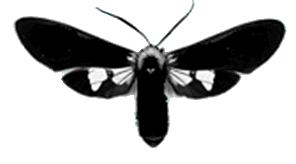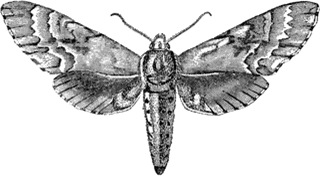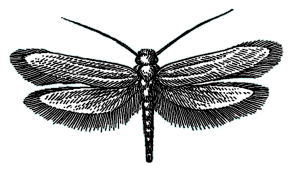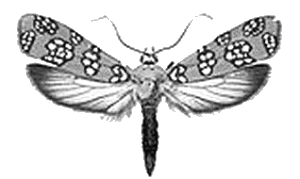Kwik-Key to Common Families of Lepidoptera
Answer for your specimen:
If you have reached this part of the key, your specimen should have elongated front wings, relatively small hind wings, and an abdomen that extends well beyond the length of the hind wings.
The four likely families (or superfamily) are:
Erebidae
Wasp moths or Ctenuchid moths
This group of moths is classified as a subfamily within Erebidae. Most members are diurnally active and may resemble wasps due to their narrow wings and rapid flight. Most of the common species are dark or metallic in color with yellow or red on the body or wings.

Sphingidae
Sphinx or Hawk moths
Members of this family are medium to large in size with thick, spindle-shaped bodies. The front wings are narrow, pointed, and nearly twice as large as the hind wings. Antennae are thickest near the midpoint and often curved or hooked near the tip. Larvae are known as hornworms.

Tineidae
Clothes moths
This is a family of small, delicate moths that are mottled tan, brown, or grayish in color. At rest, most species hold their wings tent-like over the body. When spread, the wings are narrow, usually rounded near the tip, and often bordered by a fringe of long hairs.

Yponomeutoidea
Ermine moths
These are slender moths that often have brightly patterned front wings and drab gray hind wings. At rest, the wings wrap in a tubular shape along the sides of the body. In the daytime, adults may be found resting on the flowers of their host plants.


